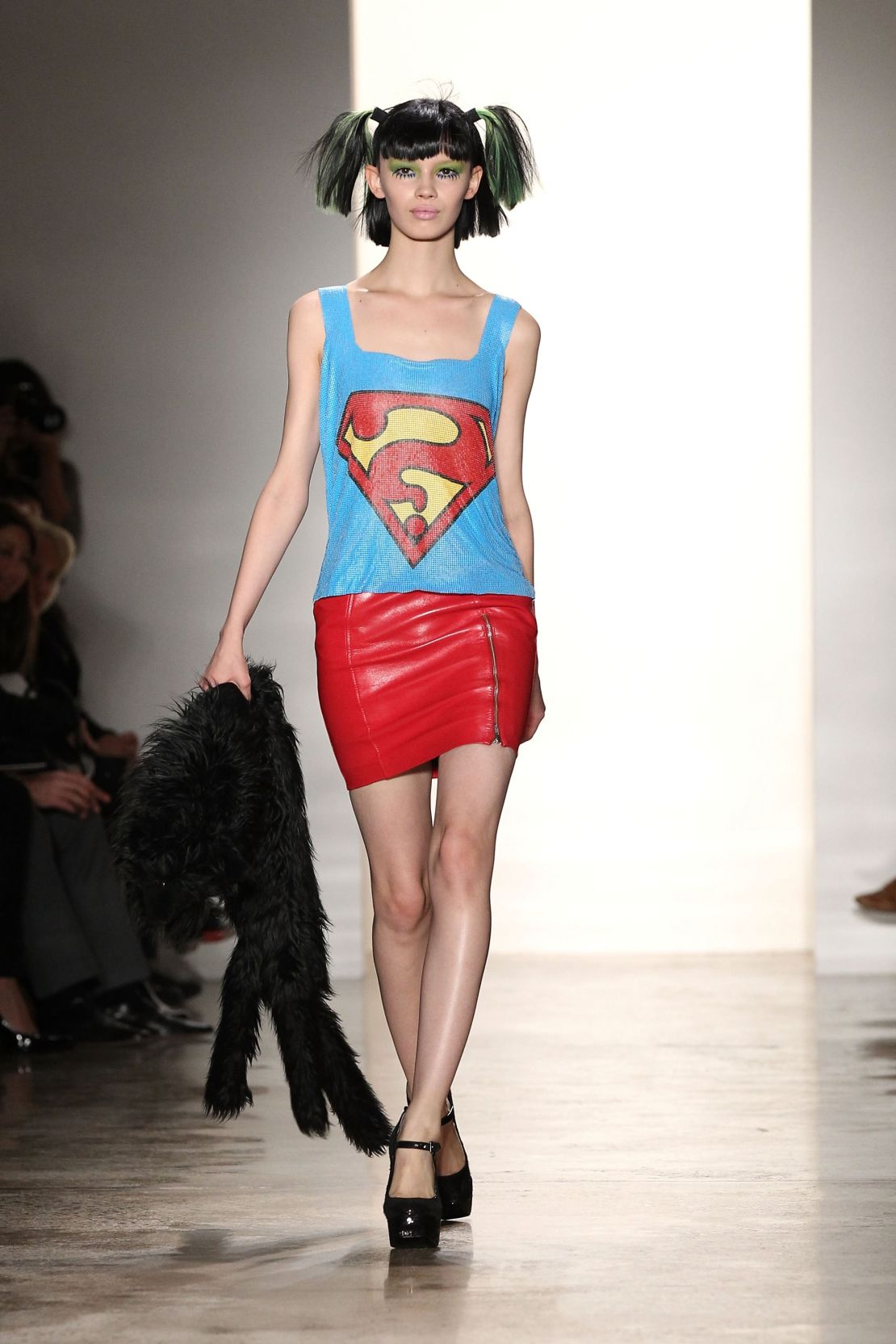Since then, the blue, red and yellow ensemble worn by Clark Kent’s alter-ego has remained largely unchanged over the decades — especially when compared to his heroic counterparts. While Batman eventually ditched his tights in favor of a darker, more militant type of body armor, Superman held strong with his second-skin suit. And although we’ve certainly seen a variety of blue shades — from periwinkle to cobalt and even Dean Cain’s indigo-washed costume from the 1990’s TV show “Lois & Clark” — Superman’s uniform is still instantly recognizable across generations. In fact, there is only one film — Zack Snyder’s 2013 “Man of Steel” — in which Superman does not wear his iconic red belted trunks.
That particular suit was “grounded in the culture of his home planet, Krypton,” the film’s costume designer Michael Wilkinson told CNN via email. Wilkinson was inspired by the scale-like armor and muscular physiques of the Kryptonian race. “We drew many versions of the suit — one day we did (one) without the trunks and it seemed to be the best fit for our vision.”
For James Gunn, the director of the upcoming remake, “Superman,” reviving the layered briefs once more was a disarming tactic. “He wants to be a symbol of hope and positivity. So he dresses like a professional wrestler,” Gunn said in an interview with entertainment site CinemaBlend last year. “He dresses in a way that makes people unafraid of him.
A handful of luxury fashion brands have considered the comic book hero something of a muse. In 2008, New York’s Metropolitan Museum of Art’s Costume Institute staged an exhibition on superheroes, titled “Fashion and Fantasy. There were some 60 ensembles on show, from movie costumes to haute couture. One such piece was German designer Bernhard Willhelm’s 2006 royal blue dress emblazoned with a bloody, dripping Superman ‘S’ logo. “Today, superhero imagery has suffused almost every aspect of popular culture,” the institute’s curator, Andrew Bolton, said at the time. “The superhero’s iconic costume of cape, mask, and bodysuit finds many fashionable permutations. But fashion’s embrace of the superhero extends beyond iconography, to issues of identity, sexuality, and nationalism.” He added that fashion shares with the superhero “an inherent metaphorical malleability which fuels its fascination with the idea and the ideal of the superhero.”
A few years later, American fashion designer created a royal blue sequined long-sleeved maxi dress for Moschino’s Fall-Winter 2011 collection. On the front was a re-imagined “S” logo — the letter had been replaced with a question mark — while a yard of red tulle attached to the dress trailed behind like an elegant cape. “You should have fun with fashion,” Scott told Vogue at the time. He also presented an electric blue singlet top with the same stylized question mark. The following year, Chanel staged its Fall-Winter 2012 runway show inside what the press likened to the Fortress of Solitude — Superman’s crystalline lair. Models walked around giant purple and black geodes jutting out of the floor, which was covered with white sand.
And it wasn’t just models donning versions of the iconic chevron logo. In the 1990s and 2000s, the Superman “S” became an ironic uniform for those in the zeitgeist. Smashing Pumpkins frontman Billy Corgan wore a black sweater with the emblem rendered in pink and yellow to a 1993 show in Chicago (across the sleeves read “Superslut”). The band even included the iconic “S” into their own line of merchandise, while Eminem created his own backwards “Super-E” version in 2002.
It was a far cry from the traditional image of faultless masculinity peddled by Christopher Reeve in the 1970s — who worked out several hours a day to make sure Superman wasn’t “a string bean.” But by the turn of the century, the comic book character had been co-opted by legions of musicians and creatives — who were more artistic than athletic. “When I researched the Superman suit as part of my design preparation, I realized how much resonance the suit has,” said Wilkinson. “So many people have taken the suit and given it their own spin, used it to help tell their own story from their own perspective — whether it’s reverential, ironic or somewhere in-between. I think the Superman suit engenders discussion about the concept of an ‘ideal,’ a ‘perfection’ — a concept that has fascinated creative artists for thousands of years.”
Today, it seems we’re witnessing another sartorial upswing of superhero fashion. Last summer, Marc Jacobs re-released an updated version of a classic ‘S’ emblazoned cashmere sweater originally made in the late 1990s. The modernized pull-over — produced in collaboration with streetwear designer Nigo— is made from an alpaca and merino wool blend, and available for $495. Those in-the-know, will have spotted the jumper among London Fashion Week guests last season. Similarly, vintage-looking Superman T-shir
